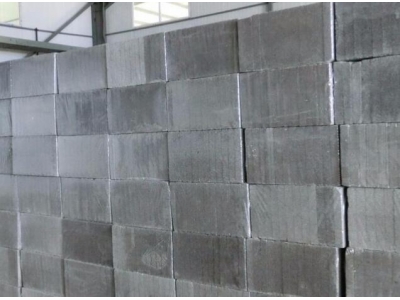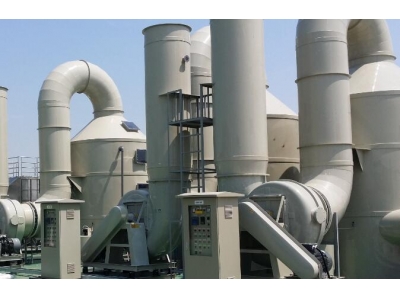一、工业建筑分类标准?
1、按层数分
(1)单层厂房;仅一层,多用于冶金、重型及中型机械工业;
(2)多层厂房;二层以上,多用于食品、电子、精密仪器工业等;
(3)层次混合的厂房;多层和单层混合在一幢建筑中,多用于化学工业、热电站的主厂房;
2、按用途分
(1)生产厂房。进行产品的备料、加工、装配等,为企业主要车间;
(2)生产辅助厂房。为生产厂房服务的厂房,如:修理车间、工具车间;
(3)动力厂房。为全厂提供能源的厂房,如发电站、变电所、锅炉房等;
(4)仓储建筑。原材料、半成品、成品房屋;
(5)运输用建筑。
(6)其他建筑。如水泵房、污水处理建筑。
3、按跨度的数量和方向分
(1)单跨厂房。只有一个跨度;
(2)多跨厂房。由几个跨度组合而成,车间内彼此相通;
(3)纵横相交厂房。由两方向的跨度组合而成,车间内彼此相通;
4、按跨度尺寸分
(1)小跨度。小于等于12m的单层厂房。此类以砌体结构为主;
(2)大跨度。15——-36m的单层工业厂房;15——-30m以钢筋混凝土为主,36m及其以上的以钢结构为主;
5、按生产状况分
(1)冷加工车间。常温状态下加工非燃烧物质和材料的生产车间,如机械、修理等;
(2)热加工车间。如铸造、锻压、热处理车间;
(3)恒温恒湿车间。如精密仪器、纺织车间;
(4)洁净车间。如药品、集成电路车间;
(5)其他特种状况车间。如放射性车间、防电磁波干扰车间;
二、建筑施工企业分类标准?
根据《建筑业企业资质管理规定》的规定,施工总承包资质、专业承包资质、劳务分包资质序列按照工程性质和技术特点分别划分为若干资质类别。各资质类别按照规定的条件划分为若干等级。
其中,施工总承包企业分为十二个类别,它们是:
(1) 房屋建筑工程施工总承包企业
(2) 公路工程施工总承包企业
(3) 铁路工程施工总承包企业
(4) 港口与航道工程施工总承包企业
(5) 水利水电工程施工总承包企业
(6) 电力工程施工总承包企业
(7) 矿山工程施工总承包企业
(8) 冶炼工程施工总承包企业
(9) 化工石油工程施工总承包企业
(10)市政公用工程施工总承包企业
(11)通信工程施工总承包企业
(12)机电安装工程施工总承包企业
专业承包企业分为六十个类别,它们是:
(1) 地基与基础工程专业承包企业
(2) 土石方工程专业承包企业
(3) 建筑装修装饰工程专业承包企业
(4) 建筑幕墙工程专业承包企业
(5) 预拌商品混凝土专业企业
(6) 混凝土预制构件专业企业
(7) 园林古建筑工程专业承包企业
(8) 钢结构工程专业承包企业
(9) 高耸构筑物工程专业承包企业
(10)电梯安装工程专业承包企业
(11)消防设施工程专业承包企业
(12)建筑防水工程专业承包企业
(13)防腐保温工程专业承包企业
(14)附着升降脚手架专业承包企业
(15)金属门窗工程专业承包企业
(16)预应力工程专业承包企业
(17)起重设备安装工程专业承包企业
(18)机电设备安装工程专业承包企业
(19)爆破与拆除工程专业承包企业
(20)建筑智能化工程专业承包企业
(21)环保工程专业承包企业
(22)电信工程专业承包企业
(23)电子工程专业承包企业
(24)桥梁工程专业承包企业
(25)隧道工程专业承包企业
(26)公路路面工程专业承包企业
(27)公路路基工程专业承包企业
(28)公路交通工程专业承包企业
(29)铁路电务工程专业承包企业
(30)铁路铺轨架梁工程专业承包企业
(31)铁路电气化工程专业承包企业
(32)机场场道工程专业承包企业
(33)机场空管工程及航站楼弱电系统工程专业承包企业
(34)机场目视助航工程专业承包企业
(35)港口与海岸工程专业承包企业
(36)港口装卸设备安装工程专业承包企业
(37)航道工程专业承包企业
(38)通航建筑工程专业承包企业
(39)通航设备安装工程专业承包企业
(40)水上交通管制工程专业承包企业
(41)水工建筑物基础处理工程专业承包企业
(42)水工金属结构制作与安装工程专业承包企业
(43)水利水电机电设备安装工程专业承包企业
(44)河湖整治工程专业承包企业
(45)堤防工程专业承包企业
(46)水工大坝工程专业承包企业
(47)水工隧洞工程专业承包企业
(48)火电设备安装工程专业承包企业
(49)送变电工程专业承包企业
(50)核工程专业承包企业
(51)炉窑工程专业承包企业
(52)冶炼机电设备安装工程专业承包企业
(53)化工石油设备管道安装工程专业承包企业
(54)管道工程专业承包企业
(55)无损检测工程专业承包企业
(56)海洋石油工程专业承包企业
(57)城市轨道交通工程专业承包企业
(58)城市及道路照明工程专业承包企业
(59)体育场地设施工程专业承包企业
(60)特种专业工程专业承包企业
劳务分包企业分为十三个类别,它们是:
(1) 木工作业分包企业
(2) 砌筑作业分包企业
(3) 抹灰作业分包企业
(4) 石制作分包企业
(5) 油漆作业分包企业
(6) 钢筋作业分包企业
(7) 混凝土作业分包企业
(8) 脚手架作业分包企业
(9) 模板作业分包企业
(10)焊接作业分包企业
(11)水暖电安装作业分包企业
(12)钣金作业分包企业
(13)架线作业分包企业
三、公共建筑分类标准?
一二类公共建筑分类:
1、对于住宅,建筑高度大于54米为一类高层、建筑高度大于27米小于等于54米为二类高层。2、对于公共建筑,建筑高度大于50米的二层及二层以上建筑为一类高层,建筑高度大于24米小于等于50米的非单层建筑为二类高层。
3、建筑高度大于24米的医疗建筑、独立建造的老年人照料设施、重要的公共建筑为一类高层。4、藏书量超过100万册的图书馆、省级以上的防灾指挥调度楼超过24米非单层建筑为一类高层。
5、建筑高度24米以上部分任一楼层的建筑面积大于1000平方米的展览、商店、邮政、电信、财贸金融建筑和多种功能组合的建筑为一类高层。
公共建筑包含办公建筑,商业建筑,旅游建筑,科教文卫建筑,通信建筑以及交通运输类建筑。公共建筑的功能问题包括以下几个主要方面:空间构成、功能分区、人流组织与疏散以及空间的量度、形状和物理环境,其中突出的重点则是建筑空间的使用性质和流线活动问题。
四、建筑结构分类的标准?
建筑结构一般分为:钢、木、砖木、砖混、框架、框剪和筒等结构形式。
五、建筑三级分类标准?
三级资质标准:1、企业资产净资产800万元以上。
2、企业主要人员(1)建筑工程、机电工程专业注册建造师合计不少于5人,其中建筑工程专业注册建造师不少于4人。
(2)技术负责人具有5年以上从事工程施工技术管理工作经历,且具有结构专业中级以上职称或建筑工程专业注册建造师执业资格;建筑工程相关专业中级以上职称人员不少于6人,且结构、给排水、电气等专业齐全。
(3)持有岗位证书的施工现场管理人员不少于15人,且施工员、质量员、安全员、机械员、造价员、劳务员等人员齐全。
(4)经考核或培训合格的中级工以上技术工人不少于30人。
(5)技术负责人(或注册建造师)主持完成过本类别资质二级以上标准要求的工程业绩不少于2项。承包工程范围:特级企业: 1、取得施工总承包特级资质的企业可承担本类别各等级工程施工总承包、设计及开展工程总承包和项目管理业务;2、取得房屋建筑、公路、铁路、市政公用、港口与航道、水利水电等专业中任意1项施工总承包特级资质和其中2项施工总承包一级资质,即可承接上述各专业工程的施工总承包、工程总承包和项目管理业务,及开展相应设计主导专业人员齐备的施工图设计业务。
3、取得房屋建筑、矿山、冶炼、石油化工、电力等专业中任意1项施工总承包特级资质和其中2项施工总承包一级资质,即可承接上述各专业工程的施工总承包、工程总承包和项目管理业务,及开展相应设计主导专业人员齐备的施工图设计业务。
4、特级资质的企业,限承担施工单项合同额3000万元以上的房屋建筑工程。
六、建筑抗震设防分类标准
建筑抗震设防分类标准是保障建筑在地震中具有一定的抗震能力和安全度量的重要指标。作为建筑行业的从业者,了解抗震设防分类标准的基本原理和要求对于确保建筑物的安全和可靠性至关重要。
什么是建筑抗震设防分类标准
建筑抗震设防分类标准是指根据建筑物所在地的地震烈度、建筑物结构类型和用途等因素,将建筑物划分为不同地震烈度区、不同结构类型和用途的等级,并要求建筑物在地震作用下具有相应的抗震能力。
建筑抗震设防分类标准的主要目的是通过科学的划分和分类,制定出适用于不同地震区和不同建筑类型的抗震设计要求,从而确保建筑物在地震中的安全和稳定。
建筑抗震设防分类标准的基本原理
建筑抗震设防分类标准的制定基于以下几个原理:
- 地震烈度原理:根据不同地区地震的烈度等级,将区域划分为不同烈度区,建筑物的抗震设防要求因此而不同。
- 结构类型原理:不同的建筑结构类型对地震的响应和破坏程度有所不同,因此需要对不同结构类型的建筑物制定相应的抗震设计要求。
- 用途原理:不同用途的建筑物承受的地震力和破坏程度也有所不同,因此需要根据建筑物的用途确定相应的抗震设防要求。
建筑抗震设防分类标准的要求与级别
根据中国国家标准,建筑抗震设防分类标准分为多个级别,具体要求如下:
- 一级:一级抗震设防标准适用于地震烈度较小、对人身安全要求较高的重要建筑物,如医院、消防站等。
- 二级:二级抗震设防标准适用于地震烈度较小、人员密集的建筑物,如学校、酒店等。
- 三级:三级抗震设防标准适用于一般性的建筑物,如住宅、办公楼等。
- 四级:四级抗震设防标准适用于地震烈度较大、对人员要求较低的建筑物,如工业厂房等。
建筑抗震设防分类标准的不同级别对于建筑物的抗震能力和设计要求有着明确的区分。
如何根据抗震设防分类标准进行设计
根据建筑抗震设防分类标准进行设计需要遵循以下步骤:
- 了解地震烈度:首先要了解所在地区的地震烈度等级,以确定建筑物所属的地震烈度区。
- 确定建筑结构类型:根据建筑物的结构类型确定所属的结构类型分类。
- 确定建筑物用途:根据建筑物的用途确定所属的用途分类。
- 查阅相应标准:根据建筑物所在地震烈度区、结构类型和用途,查阅相应的抗震设防分类标准和设计规范。
- 进行抗震设计:根据所查阅的标准和规范,进行建筑物的抗震设计,确保其满足相应的抗震要求。
建筑抗震设防标准的意义与作用
建筑抗震设防分类标准的制定和应用对于保障建筑物在地震中的安全和稳定具有重要的意义和作用:
- 安全保障:建筑抗震设防分类标准能够确保建筑物在地震中具有一定的抗震能力,保护人员的生命安全。
- 减小灾害损失:通过科学合理的抗震设计,可以减小地震对建筑物和财产的损失,降低灾害发生后的恢复和重建成本。
- 提高建筑质量:抗震设防分类标准要求建筑物在设计、施工和使用过程中严格遵循相关规范和标准,从而提高建筑质量和可靠性。
- 指导设计和施工:建筑抗震设防分类标准提供了科学的设计依据和施工指导,帮助建筑师和工程师确保设计和施工的质量和安全。
总之,建筑抗震设防分类标准是保障建筑物在地震中具有一定抗震能力和安全度量的重要指标。建筑行业的从业者应当深入了解和应用相关标准和规范,确保建筑物的抗震设计和施工符合要求,为人们的生命和财产安全提供可靠保障。
(Translation: htmlThe classification standards for seismic fortification in buildings are important indicators to ensure that buildings have a certain level of seismic resistance and safety measures during earthquakes. As professionals in the construction industry, it is crucial to understand the basic principles and requirements of seismic fortification classification standards in order to ensure the safety and reliability of buildings.
What are the Classification Standards for Seismic Fortification in Buildings
The classification standards for seismic fortification in buildings refer to the division of buildings into different levels based on factors such as the seismic intensity of the location, the type of building structure, and its purpose. The standards require buildings to possess the corresponding seismic resistance capacity under the influence of earthquakes.
The main purpose of the classification standards for seismic fortification in buildings is to scientifically divide and classify buildings, and develop seismic design requirements that are applicable to different seismic zones and building types, thereby ensuring the safety and stability of buildings during earthquakes.
Basic Principles of Classification Standards for Seismic Fortification in Buildings
The development of classification standards for seismic fortification in buildings is based on the following principles:
- Seismic Intensity Principle: Different regions are categorized into different intensity zones based on the intensity level of earthquakes. The seismic fortification requirements for buildings vary accordingly.
- Structure Type Principle: Different types of building structures have varying responses and degrees of damage during earthquakes. Therefore, corresponding seismic design requirements need to be established for different structure types of buildings.
- Purpose Principle: Buildings of different purposes endure different seismic forces and levels of damage. Therefore, seismic fortification requirements need to be determined based on the purpose of the building.
Requirements and Levels of Classification Standards for Seismic Fortification in Buildings
According to China's national standards, the classification standards for seismic fortification in buildings are divided into multiple levels, with the specific requirements as follows:
- Level 1: Level 1 seismic fortification standards apply to important buildings with lower seismic intensity and higher requirements for personal safety, such as hospitals and fire stations.
- Level 2: Level 2 seismic fortification standards apply to buildings with lower seismic intensity and dense populations, such as schools and hotels.
- Level 3: Level 3 seismic fortification standards apply to general buildings, such as residential buildings and office buildings.
- Level 4: Level 4 seismic fortification standards apply to buildings with higher seismic intensity and lower requirements for personnel, such as industrial plants.
The different levels of classification standards for seismic fortification in buildings clearly differentiate the seismic resistance capacity and design requirements for buildings.
How to Design According to the Classification Standards for Seismic Fortification
Designing according to the classification standards for seismic fortification in buildings involves the following steps:
- Understand Seismic Intensity: First, understand the seismic intensity level of the region to determine the seismic intensity zone to which the building belongs.
- Determine Building Structure Type: Determine the category of structure type based on the building's structure.
- Determine Building Purpose: Determine the category of purpose based on the intended use of the building.
- Refer to Relevant Standards: Refer to the corresponding classification standards and design specifications based on the building's seismic intensity zone, structure type, and purpose.
- Conduct Seismic Design: Design the building's seismic fortification according to the standards and specifications referred to earlier, ensuring that it meets the respective seismic requirements.
Significance and Role of Classification Standards for Seismic Fortification in Buildings
The development and application of classification standards for seismic fortification in buildings have significant importance and roles in ensuring the safety and stability of buildings during earthquakes:
- Safety Assurance: The classification standards for seismic fortification in buildings ensure that buildings have a certain level of seismic resistance, thus protecting lives.
- Reduced Disaster Losses: Through scientifically and reasonably designed seismic fortification, the damage inflicted on buildings and properties during earthquakes can be reduced, thereby decreasing the costs of recovery and reconstruction after disasters.
- Improved Building Quality: Seismic fortification classification standards require buildings to strictly adhere to relevant regulations and standards during the design, construction, and utilization processes, consequently enhancing building quality and reliability.
- Guidance for Design and Construction: Classification standards for seismic fortification in buildings provide a scientific basis for designing and constructive guidance, assisting architects and engineers in ensuring the quality and safety of design and construction.
In conclusion, the classification standards for seismic fortification in buildings are crucial indicators to ensure that buildings possess seismic resistance capacity and safety measures during earthquakes. Professionals in the construction industry should delve into and apply the relevant standards and specifications to ensure that the seismic design and construction of buildings comply with the requirements, thereby providing reliable safeguards for the safety of lives and properties.
)七、最新建筑抗震设防分类标准?
各类别建筑的抗震设防标准分别是:
(1)标准设防类:应按本地区抗震设防烈度确定其抗震措施和地震作用,达到在遭遇高于当地抗震设防烈度的预估罕遇地震影响时不致倒塌或发生危及生命安全的严重破坏的抗震设防目标。
(2)重点设防类:应按高于本地区抗震设防烈度一度的要求加强其抗震措施;但抗震设防烈度为9度时应按比9度更高的要求采取抗震措施;地基基础的抗震措施,应符合有关规定。同时,应按本地区抗震设防烈度确定其地震作用。
(3)特殊设防类:应按高于本地区抗震设防烈度提高一度的要求加强其抗震措施;但抗震设防烈度为9度时应按比9度更高的要求采取抗震措施。同时,应按批准的地震安全性评价的结果且高于本地区抗震设防烈度的要求确定其地震作用。
(4)适度设防类:允许比本地区抗震设防烈度的要求适当降低其抗震措施,但抗震设防烈度为6度时不应降低。一般情况下,仍应按本地区抗震设防烈度确定其地震作用。
八、医院建筑设计的分类标准?
按《建筑设计防火规范GB 50016-2014 》(以下简称“建规”)5.1.1条:民用建筑根据其建筑高度和层数可分为单、多层民用建筑和高层民用建筑。高层民用建筑根据其建筑高度、使用功能和楼层的建筑面积可分为一类和二类。
一、医疗建筑指的是什么?
医疗建筑是从事医疗诊断、治疗活动的建筑,包括医院、卫生院、 疗养院、门诊部、诊所、卫生室以及急救站等。
二、按表5.1.1可知,高层民用建筑的医疗建筑为一类。那么,问题来了,哪些医疗建筑是二类高层民用建筑呢?
参考“建规”5.1.1条文说明: 对于公共建筑,本规范以24m作为区分多层和高层公共建筑的标准。在高层建筑中将性质重要、火灾危险性大、疏散和扑救难度大的建筑定为一类。所以将医疗建筑划为一类,主要考虑了建筑中有不少人员行动不便、疏散困难,建筑内发生火灾易致人员伤亡。
三、综上所述:华建君(华建环境设计研究所)认为医疗建筑的分类解读如下所示:
九、建筑工程抗震设防分类标准?
各类别建筑的抗震设防标准分别是:
(1)标准设防类:应按本地区抗震设防烈度确定其抗震措施和地震作用,达到在遭遇高于当地抗震设防烈度的预估罕遇地震影响时不致倒塌或发生危及生命安全的严重破坏的抗震设防目标。
(2)重点设防类:应按高于本地区抗震设防烈度一度的要求加强其抗震措施;但抗震设防烈度为9度时应按比9度更高的要求采取抗震措施;地基基础的抗震措施,应符合有关规定。同时,应按本地区抗震设防烈度确定其地震作用。
(3)特殊设防类:应按高于本地区抗震设防烈度提高一度的要求加强其抗震措施;但抗震设防烈度为9度时应按比9度更高的要求采取抗震措施。同时,应按批准的地震安全性评价的结果且高于本地区抗震设防烈度的要求确定其地震作用。
(4)适度设防类:允许比本地区抗震设防烈度的要求适当降低其抗震措施,但抗震设防烈度为6度时不应降低。一般情况下,仍应按本地区抗震设防烈度确定其地震作用。
十、军事设施建筑抗震设防分类标准?
分别有四个抗震标准。甲类:属于特殊设防类,涉及国家公共安全的大型建筑工程和地震时可能发生严重灾害后果,需要做特殊设防的建筑;乙类:指地震时使用功能无法中断的相关建筑,需提高设防标准的建筑;丙类:算标准设防类,按1、2、4款外按标准进行设防的建筑;丁类,适用上人员稀少且震损导致的次生灾害,允许在特定条件下适当降低要求的建筑。
二、建筑抗震等级划分如何划分
1、抗震等级
根据烈度、结构类型和房屋高度等等来决定,用不同抗震等级。以钢筋混凝土框架结构为例,抗震等级分为四个等级,分别为很严重、严重、较严重及一般。
2、地震烈度
国家主管部门需根据地理、地质等,并且要经过科学勘查和验证,城市和地区进行的抗震设防及地震分组的经验数值,属于地域概念。抗震设防分别为甲、乙、丁类建筑,我国大部分地区房屋抗震烈度为8度。
3、震级指的是地震强度所划分的等级,地震等级为六级:分别为小地震3级,有感地震3-4.5级,中强地震4.5-6级,强烈地震6-7级,在8级以上为巨大地震。





